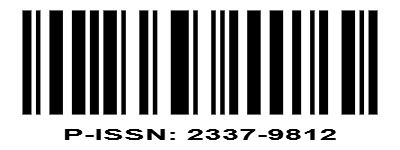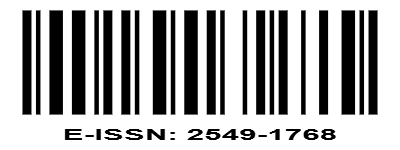TWO-TIER MULTIPLE CHOICE (TTMC) INSTRUMENT FOR MEASURING STUDENTS' COMPLETE ABILITY QUESTION EVALUATED LEVEL (C5)
DOI:
https://doi.org/10.22373/biotik.v11i1.17649Keywords:
Student Ability, High Order Thinking Skills (HOTS), C5 (Evaluation), Two-Tier Multiple Choice (TTMC)Abstract
Data from the Program For International Student Assessment (PISA) explains that the weakness of Indonesian students is their inability when faced with problems that require skills, are critical, and creative. This study aims to describe students' ability to solve C5 questions, which is a cognitive level in solving HOTS (High Order Thinking Skills) questions using the Two-Tier Multiple Choice instrument. This type of research uses a quantitative approach with a descriptive method. The results showed that the answer categories of students who understood an average of 4.2%, students who misconceived an average of 13%, students who guessed an average of 26% and students who did not understand had an average of 56%, this figure shows that the average The highest average of students did not understand or could not solve well the questions with the cognitive level of evaluating or C5, so that it became a source of assessment for understanding student learning concepts, and could foster motivation in learning.
Downloads
References
Moh. Zainal Fanani. 2018 . “Strategi Pengembangan Soal Higher Order Thinking Skills (HOTS) Dalam Kurikulum 2013. Jurnal Edudeena Vol. II, No. 1
Nur Rochman laily, dkk. 2015. “Analisis Soal Tipe Higher Order Thinking Skills (HOTS) Dalam Soal UN Kimia SMA Rayon B Tahun 2012/2013”, Jurnal Kaunia.. Vol XI, No.1.
Febrina. 2019 “Analisis Kemampuan
Siswa Dalam Menyelesaikan Soal High Order Thinking Skills Pada Materi Statistika.Jurnal Dimensi Matematika.. Vol. 2, No.2.
Achmad Mujaid. 2015. “Analisis Kemampuan Berpikir Matematika Siswa Berdasarkan .1
Isnaini dkk, 2015. Pemahaman Konsep Materi Larutan Penyangga Menggunakan Two-Tier Multiple Choice, (Pontianak : Untan.)
Lisa Fitriyani, 2021. Identifikasi
Miskonsepsi Siswa Menggunakan Tes Diagnostic Three Tier Pada Materi Asam Basa Di SMA Negeri 1 Mesjid Raya. Skripsi. UIN Ar-Raniry Banda Aceh.
Fahrizal Prabowo S. 2015.
“Identifikasi Miskonsepsi Siswa Pada Materi Genetika Di Kelas XII IPA SMA Negeri 13 Medan tahun Pembelajaran 2014/2015.” Jurnal Pelita Pendidikan. Vol. 3. No.4
Regina Nabila B, dkk. 2021.
“Analisis Kesalahan Siswa SMP Kelas VIII Dalam Menyelesaikan Soal Perbandingan” Jurnal Pembelajaran Matematika Inovatif. Vol. 4, No.3.
Tina Sri S. 2016. “Peningkatan
Kemampuan Pemecahan Masalah Matematis Siswa Melalui Pembelajaran Berbasis Masalah.” Jurnal Pendidikan Matematika. Vol 5, No. 2.
Putu Manik S, dkk. 2020.
“Kemampuan Berpikir Tingkat Tinggi Dalam Menyelesaikan Soal HOTS Mata Pelajaran Matematika”. Jurnal Ilmiah Sekolah Dasar. Vol.4, No.2.
Downloads
Published
Issue
Section
License
Authors who publish with BIOTIK: Jurnal Ilmiah Biologi Teknologi dan Kependidikan agree to the following terms:
- Authors retain copyright and grant the journal right of first publication with the work simultaneously licensed under a Creative Commons Attribution License that allows others to share the work with an acknowledgement of the work's authorship and initial publication in this journal.
- Authors are able to enter into separate, additional contractual arrangements for the non-exclusive distribution of the journal's published version of the work (e.g., post it to an institutional repository or publish it in a book), with an acknowledgement of its initial publication in this journal.
- Authors are permitted and encouraged to post their work online (e.g., in institutional repositories or on their website) prior to and during the submission process, as it can lead to productive exchanges, as well as earlier and greater citation of published work.











